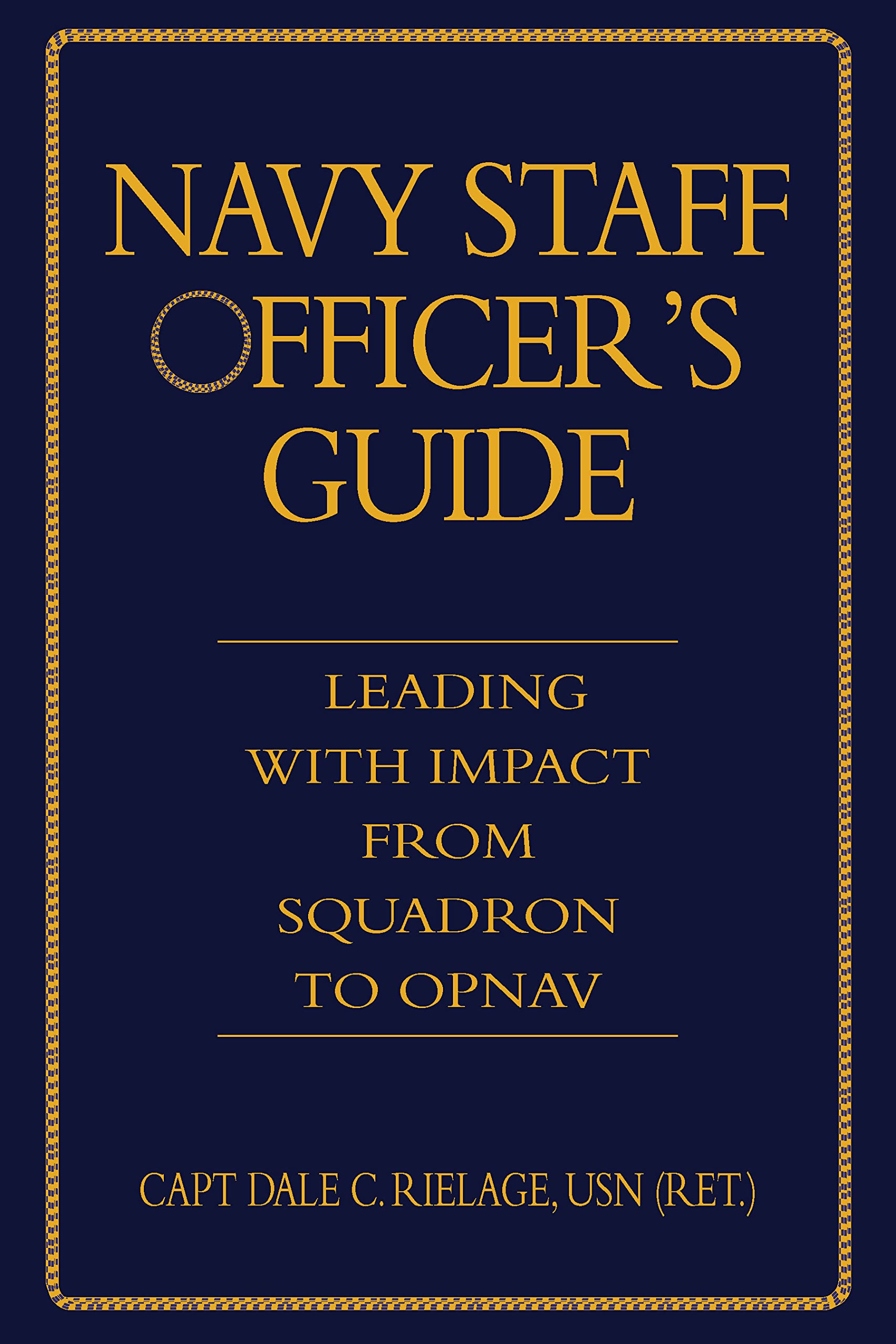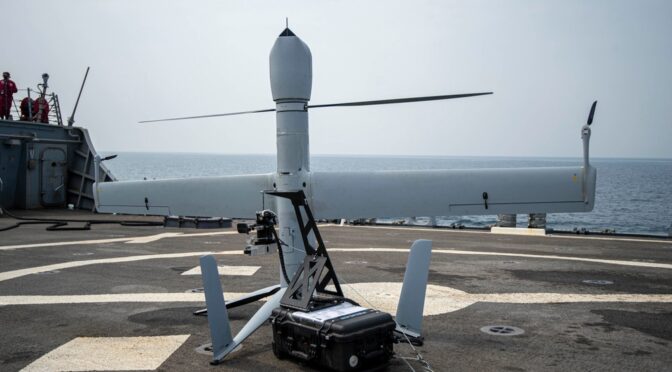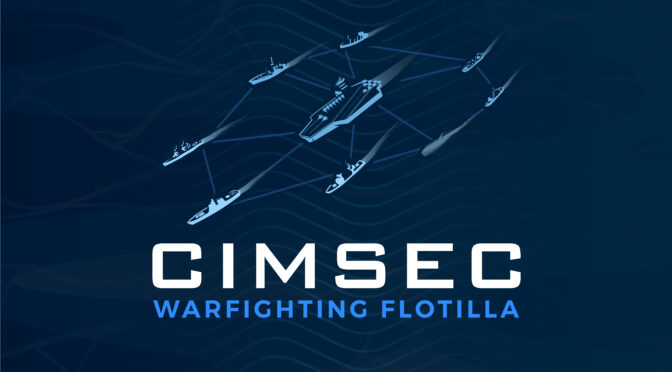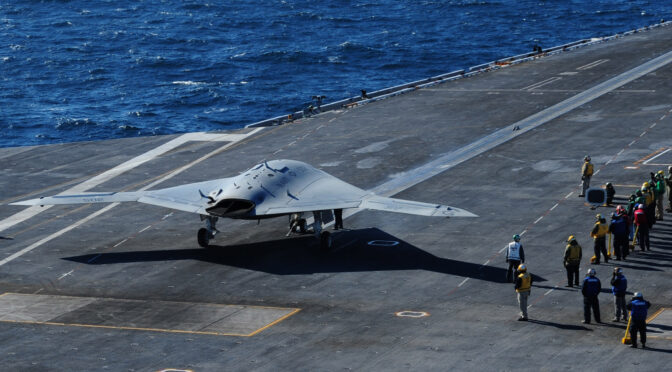By Dmitry Filipoff
Dale Rielage recently spoke with CIMSEC about the role of Navy staffs in command and modern naval warfare. A retired Navy Captain, Dale has captured the lessons of his long experience in the Navy Staff Officer’s Guide: Leading with Impact from Squadron to OPNAV, a new book in the U.S. Naval Institute professional series. A long-time CIMSEC contributor, he has been a critical voice in professional debates about how the Navy should face the challenges of the Pacific and China as a pacing challenge. In this conversation, Capt. Rielage discusses the enduring value of naval staff work, how commanders and their staffs can best work together, and what fleet-level warfare means for preparing navy staffs.
Why indeed? Of all the services, the Navy probably has the most negative view of its own staffs and staff work in general. Our identity is grounded in the first six frigates of our Navy. We remember them as independent commands, sent abroad under legendary captains with general orders to defend the interests of the new nation. To this day, the concept of “sustained superior performance at sea” does not include much place for staff work. We get together with shipmates and tell sea stories, not staff stories, right?
And while that identity is core to who we are as a service, it is also incomplete. More than a century ago naval warfare reached a level of complexity that requires a commander to be supported by a team of professionals – a staff – to inform and execute their operational design. And the sinews of maritime power are built over years through complex processes and interlocking decisions made by Navy staffs.
I have always been befuddled by staff-adverse naval officers who criticize their manning, their communications plan, their logistic support, the tactics, techniques, and procedures that their teams are taught in schoolhouses, the design of the platforms they operate, and other essential functions. They know on some level these functions are the product of other naval professionals working through a staff process, and yet the criticizing officers do not want to invest in that process.
So first and foremost, I wrote this book to convey two core truths. First, staff work matters. It does not win the fight, but it can lose it before it ever begins, and sometimes years before. Second, naval officers are not born knowing how to be effective staff officers. Like any part of the naval profession, it is a learned skill, and true professionals will apply themselves to learning it the same way they hone their craft at sea.
How is a staff assignment different than serving in the operating forces? What unique opportunities and perspectives can officers encounter on a staff assignment?
First, I would point out the diversity of Navy staffs, ranging from a destroyer squadron to a major type commander. Navy staffs serve ashore and afloat, and many in both categories are, in every sense, operational every single day.
Trying to generalize across that diverse population, staffs tend to be indirect contributors to success, providing the means for other forces, present and future, to do their work. Staffs are also often focused on a longer timeframe than the forces they serve – whether that is the operation-after-next, or conceiving, designing, and delivering a new naval platform. In some cases, staff issues endure indefinitely – think about providing naval stores to the fleet. This reality means that few staff officers experience the start or the end of a project. They shape long-term work that is then handed on to others to continue.
This dynamic means that the success and rewards for good staff work are rarely direct and immediate. Some officers never get past their need for instant gratification and struggle through their staff experience as a result. There is an element of unselfishness in good staff work. An officer has to be willing to work hard and thoughtfully on things that may not come to fruition for years, and if they eventually do, the contributing officers may not earn distinct credit.
That said, staff work can also be a uniquely rewarding experience for a developing naval leader. Staffs usually deal with a larger scope of action than do individual operational elements. For an officer who aspires to have influence or to command beyond the bounds of a single platform, a staff job is where that broad insight and vision is usually first developed. A staff tour also often offers opportunity to work directly with more senior leaders. We learn by example. A staff tour is where you get to see senior Navy leaders grappling with hard challenges up close, day after day. You also often have the chance to expand thinking beyond the stovepipe of a single operational community. A large naval staff has just about every type of naval professional – all the warfare communities, restricted line specialties, civilians, contractors – all dedicated to the mission. It can be a unique learning laboratory for the officer who is willing to invest the time and effort.
You explicitly note that a staff functions to help a commander exercise their authority, and that the authority of the staff derives from the commander’s responsibilities. What does a staff need to understand about their commander and their intent to best support them? How can a commander set enduring guidance to effectively empower the staff?
Staffs are about command – either supporting a commander’s decision-making or carrying out their decisions. That means any staff is a creature of the commander. An effective staff officer understands that fact and immediately focuses on a couple key questions. First, what matters to the commander? How do they take information most effectively? Who do they interact with up and down their chain of command? I am always concerned about staff officers who never consider these fundamentals and struggle as a result.
Commanders who are served by a staff need to learn to use their staff as an essential asset, no differently than they might have learned how best to use an afloat command structure as young officers. Clear and deliberate communication to the staff of their needs and expectations is no different than writing clear, thoughtful night orders, but it is much rarer.
Commanders also need to cultivate trust with their staff in a deliberate way. The complexity of the issues that confront most staffs, their longer timelines, and interlocking structures can make it easier to bury unpleasant information, at least for a time. This is especially true when a commander has conveyed through their actions that they do not value candor. I will tell senior staff officers and commanders that if they cannot remember the last time their thinking was challenged by their staff – and I do not mean gentle pushback, but full-on disagreement – they are likely failing on some level.
I love General Omar Bradley’s recollection of his experience when General George C. Marshall took over as Army Chief of Staff on the eve of World War II. At the end of Marshall’s first week in the job, he gathered his team, including a young Lieutenant Colonel Bradley. The staff thought they had made a pretty good first impression on their new boss, and were bewildered when he expressed disappointment in their performance. Marshall noted that, while the staff was professional and thoughtful, in the course of the week no one had disagreed with him. That was, in Marshall’s assessment, a sign that they were not fully executing their duties.
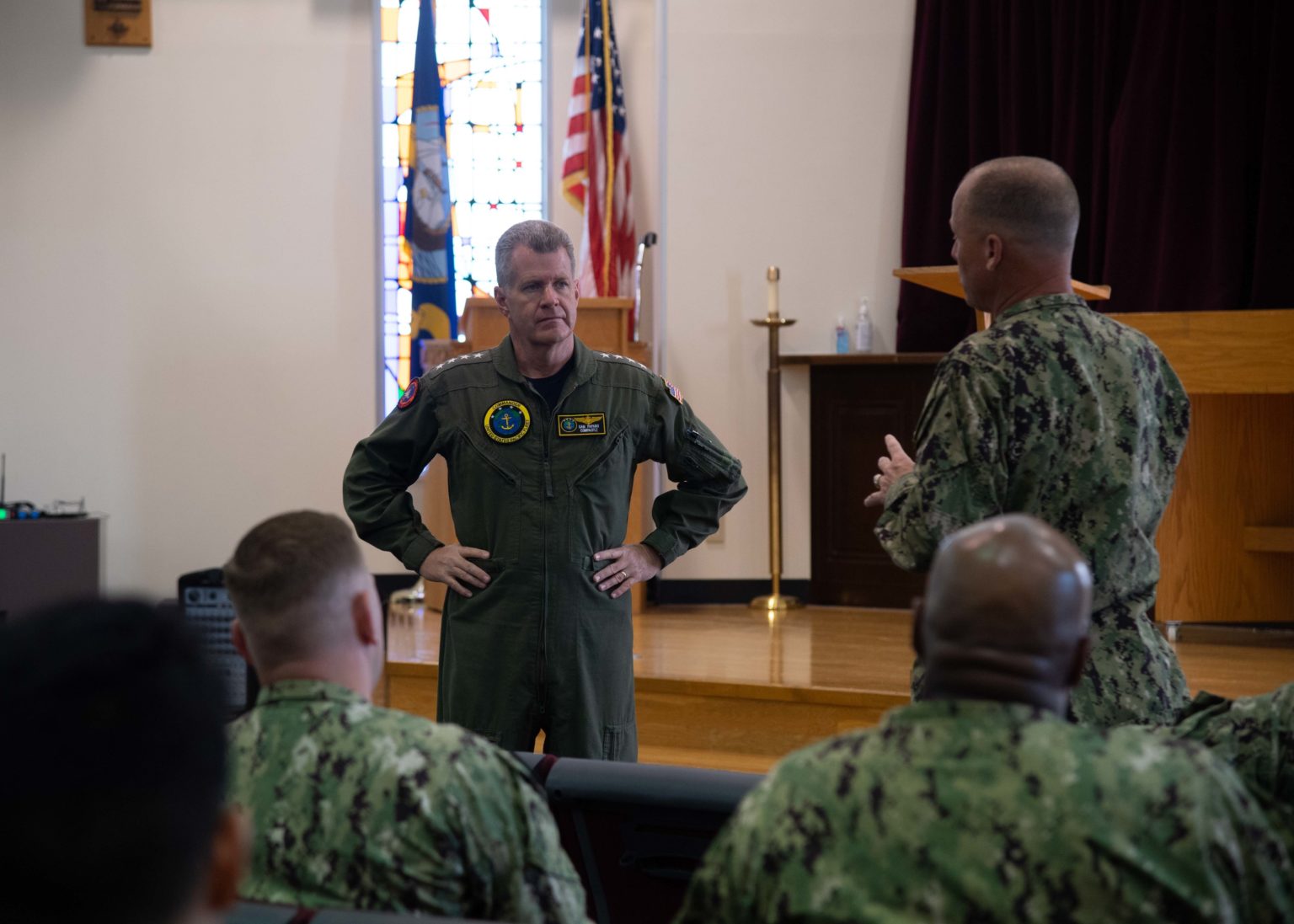
You have chapters on the functional areas that correspond with the N-codes of a major staff. Given your specific background, how does the staff intelligence team (N2) best support the commander, and how can the commander best leverage their intelligence and information operations team? How can the staff N2 integrate with the other elements of the staff?
The Navy is about prompt and sustained combat operations at sea. That means an adversary, whether a real, specific adversary or a hypothetical future adversary, needs to be central to our thinking. The intelligence team, whether one Sailor or 150, is uniquely tasked to understand and articulate these adversaries to the commander and the staff. Early in World War II, Fleet Admiral Nimitz told his intelligence officer, then LCDR Eddie Layton, that his job was to be the opposing commander for the staff, and that if he did, he would provide the Pacific Fleet with the insight it needed. That remains true today. The danger is that the requirement to manage the process of intelligence, collections or targeting, or integrating with a wider information warfare enterprise, for example, has increasingly become seen as a substitute for deep understanding of the adversary.
Assuming that penetrating understanding is achieved, taking full advantage of it requires both that intelligence professionals understand operations and that operators understand intelligence. I have often reflected that, at its best, intelligence delivers a relationship, not simply a product. Leaders take insight from people they trust. For Navy seniors, that relationship is usually built through shared experiences in Navy staffs.
You note that with the return of great power competition, the fleet has now been defined by the Navy as its basic combat formation. The CNO is calling for a renewed focus on fleet-level warfare, but these fleets are a larger-scale entity than the CSGs, ARGs, and other typical formations of recent decades. How can the fleet staffs better manifest this operational warfighting role to prepare for great power conflict? How can large-scale exercises and wargames hone the warfighting skills of fleet-level staffs and their commanders?
It is interesting how the current challenges the Navy is facing are pushing it back to the integrated fleet model of naval warfare. From the beginning of the battleship era through the end of the Cold War, the fleet was the unit of action for the Navy. Only a fleet could integrate all the capabilities of naval power across a broad ocean area, defend and attack across multiple domains, and sustain that capability for as long as was required for strategic effect. The idea that a single small formation – and in naval terms, a carrier strike group or surface action group is small – could be the unit of action was really only tenable in limited operations against adversaries who were not peers in the maritime domain.
Today, the material elements of fleet-level operations still exist. Bringing fleet-level staffs back into warfighting is more challenging, in part because it is a cultural change, and cultural change takes time. Individual unit training is core to our operations – every officer knows training is non-negotiable for safe and effective operational performance. Training for fleet-level operations, however, remains a work in progress. One of the many reasons that the interwar Fleet Problems have gained attention recently is that they were true fleet-level exercises, stressing free-play combat against live thinking adversaries, with fleet staffs adapting to dynamic operational-level problems. There are many ways to train Navy staffs to work at this level – wargaming, as you mention. But to do so, they need to be truly dynamic events and not simply concept rehearsals. They also need to be more than one-off events that an officer may encounter only once in a tour. Repetition matters.
You focus much attention on how staffs communicate and the various approaches to sharing ideas and products. What can effective communication look like, such as for an individual staff officer, staff coordination more broadly, or how the commander communicates with their staff?
Communications is the life-blood of the staff. Yes, the book includes a section on how to use email and computer presentations as communications tools. I was surprised by how many experienced staff officers have told me that this part of the book was the most valuable for them, or would have been, had they known these tips when they were starting out.
Really, for new staff officers, the big lesson is being deliberate in their approach to communications. Pick the right tool for the desired effect; use it with care and intent. Communication – a slick brief, for example – is never a substitute for insight and expertise. Usually, however, naval officers coming into staff tours know their stuff, or they learn fast, but even brilliant ideas need to be shared with rigor, power, and persuasion in the right medium to have enduring effect at scale.
For commanders, the hardest issue is usually making time to communicate with their staffs. The best make time, formal and informal, knowing that this interaction – the provision of clear guidance and vision, the power of their example – ultimately saves time by aligning the staff to serve their needs, and, through them, the mission. The tyranny of the present makes that hard, especially in a culture that expects commanders to be always connected.
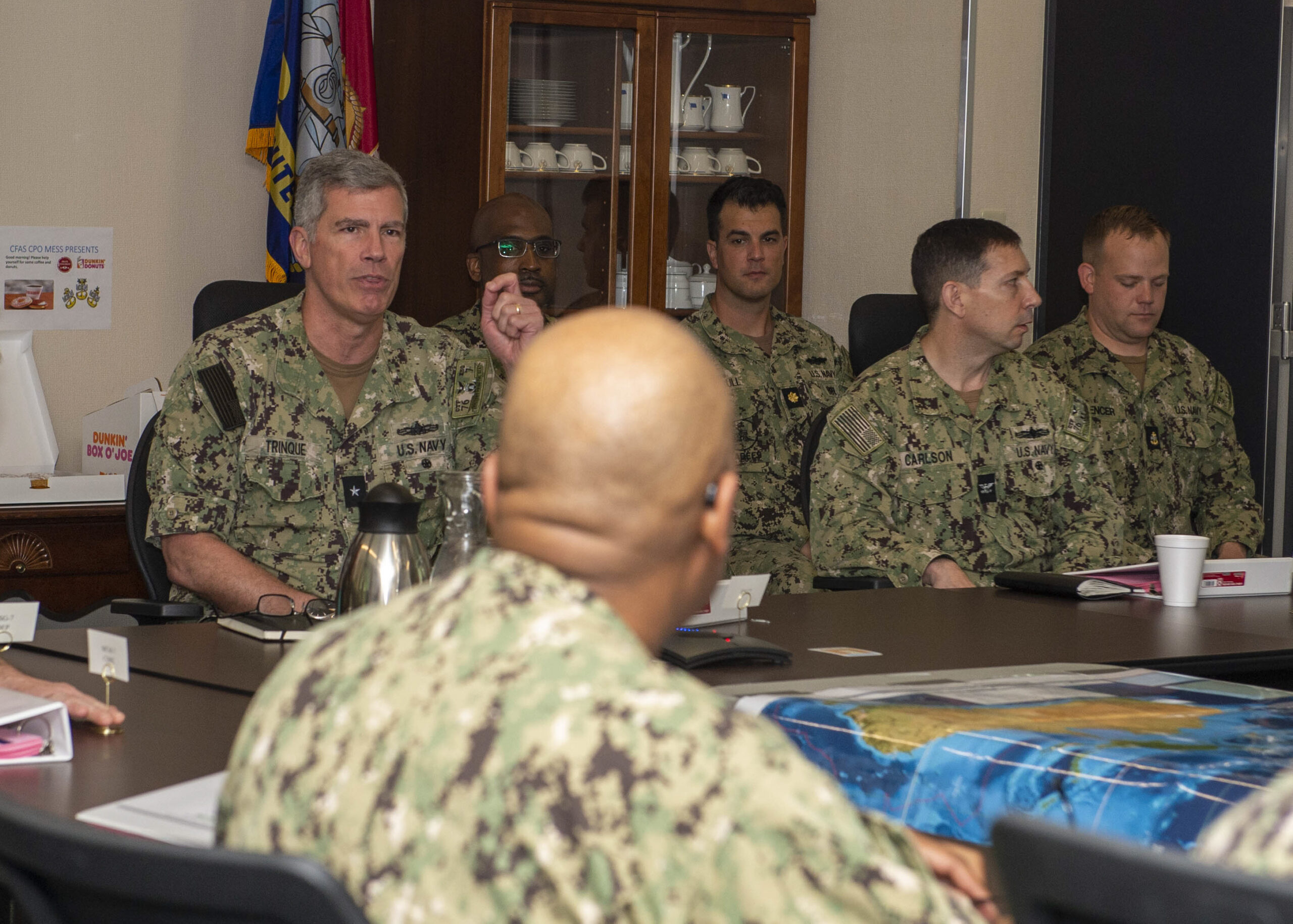
Throughout the book you share vignettes that illustrate what good (and not so good) staff work looks like. What can the career of Admiral Arleigh Burke teach us about how to do good staff work and what its legacy may be?
It says something that most naval officers do not think of Arleigh Burke as a staff officer.
When I was a young surface warfare officer, Admiral Burke was held up to us as the premier example of what we should aspire to be as warriors at sea. We all know the legend – Commodore Burke, commanding a destroyer squadron at a critical moment when the U.S. surface force was not doing well against the Imperial Japanese Navy. His style of command, perfecting innovative tactics and employing them with audacity, led to some of the most extraordinary U.S. Navy surface victories of the war. At moments when the material odds were essentially even, Burke simply out-fought his opponents.
It was only when a dear friend, Dr. David Rosenberg, shared with me his collection of Arleigh Burke’s papers that I grew to appreciate Burke as a staff officer. After his squadron command, Burke was sent to be Vice Admiral Marc Mitscher’s Chief of Staff. Mitscher commanded most of the fast aircraft carriers in the Pacific. Burke’s assignment was part of a thoughtful effort by Fleet Admiral King to ensure that surface admirals had aviator chiefs of staff, and that aviator admirals had a surface officer as their chief of staff. Burke struggled with this assignment. In his letters to his wife, Burke anguished about how he was failing as a staff officer, that he thought Mitscher disliked him, that he did not have a grasp of air power even though his job was employing the largest assembly of naval aviation in history.
In the end, Burke was brilliant. He formed an excellent team with Mitscher, and the two came to respect each other deeply. He took his tight, clear style of conveying tactical orders and scaled it to the fleet level. He learned how to fight not just a surface action group, but to employ the full multi-domain power of a modern fleet. Arguably, Burke’s staff work enabling Third Fleet’s drive across the Pacific contributed far more to victory than his relatively short period in operational command of DESRON 23. And in his later senior tours, including three tours as Chief of Naval Operations and a member of the Joint Chiefs, Burke’s ability to establish the shape of the Cold War Navy – remember, Burke was the CNO who gave the Navy its nuclear SSBN force – was through his staff. His papers are full of truly thoughtful notes to the OPNAV staff, focusing them on the important rather than the urgent, often with his trademark sense of humor.
So what I take from Admiral Burke’s career is twofold. First, he was a great warrior at sea, but his largest impact on the World War and his enduring impact across decades of our Navy came from him using that warfighting insight as part of and commanding Navy staffs. Second, even Arleigh Burke had to learn how to be a staff officer as part of his path to extraordinary impact on our Navy.
Captain Dale C. Rielage, USN (Ret.), is a former surface warfare and naval intelligence officer with eleven tours on Navy and Joint staffs afloat and ashore, including as an N-code Director in two Maritime Operations Centers, and special assistant to the Chief of Naval Operations. He is the author of several dozen articles on maritime and security issues.
Dmitry Filipoff is CIMSEC’s Director of Online Content. Contact him at [email protected].
Featured Image: YOKOSUKA, Japan (May 7, 2021) – The U.S. 7th Fleet Information Warfare Commander (IWC) holds a conference with task force IW leaders throughout the 7th Fleet and Pacific Fleet. (U.S. Navy photo)


